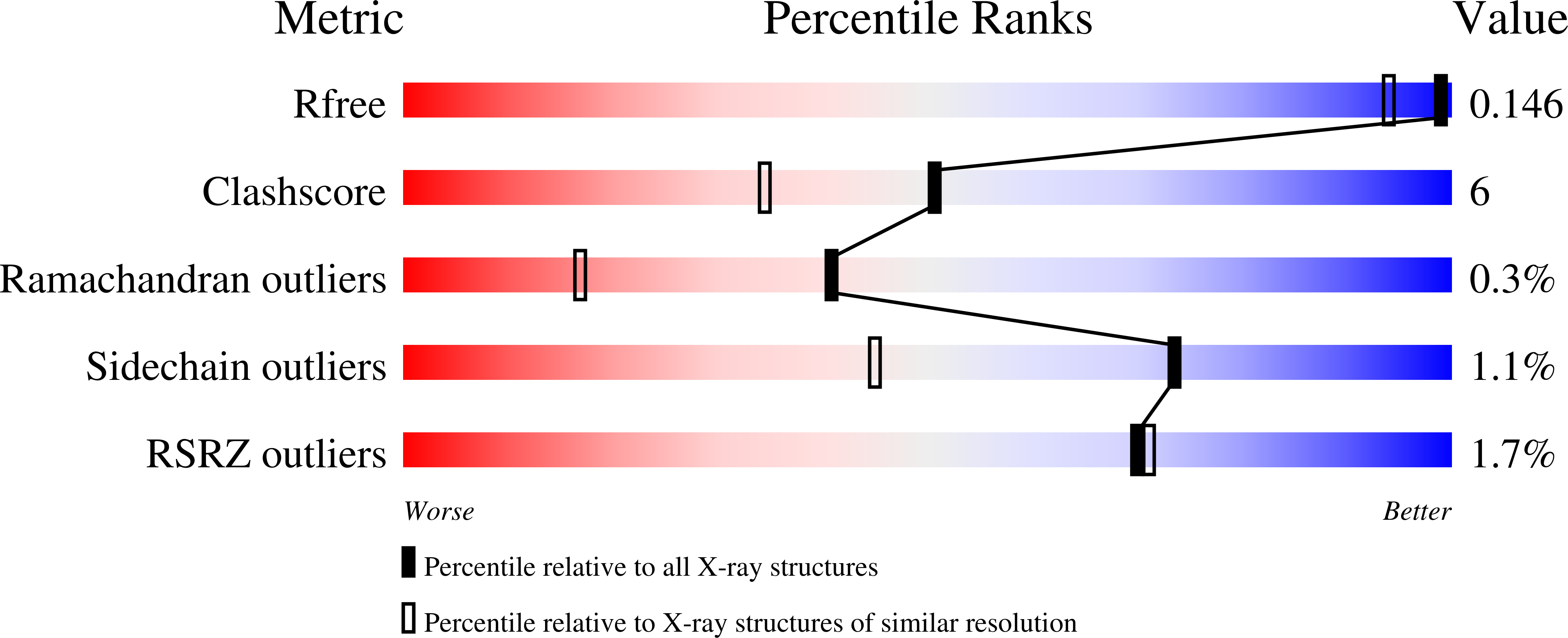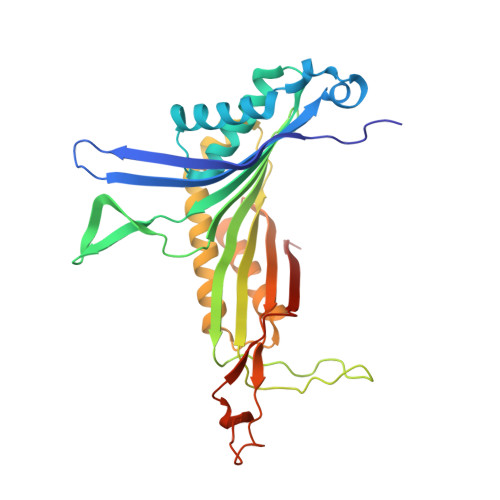Direct evidence for a peroxide intermediate and a reactive enzyme-substrate-dioxygen configuration in a cofactor-free oxidase.
Bui, S., von Stetten, D., Jambrina, P.G., Prange, T., Colloc'h, N., de Sanctis, D., Royant, A., Rosta, E., Steiner, R.A.(2014) Angew Chem Int Ed Engl 53: 13710-13714
- PubMed: 25314114
- DOI: https://doi.org/10.1002/anie.201405485
- Primary Citation of Related Structures:
4CW0, 4CW2, 4CW3, 4CW6, 4D12, 4D13, 4D17, 4D19 - PubMed Abstract:
Cofactor-free oxidases and oxygenases promote and control the reactivity of O2 with limited chemical tools at their disposal. Their mechanism of action is not completely understood and structural information is not available for any of the reaction intermediates. Near-atomic resolution crystallography supported by in?crystallo Raman spectroscopy and QM/MM calculations showed unambiguously that the archetypical cofactor-free uricase catalyzes uric acid degradation via a C5(S)-(hydro)peroxide intermediate. Low X-ray doses break specifically the intermediate C5-OO(H) bond at 100?K, thus releasing O2 in?situ, which is trapped above the substrate radical. The dose-dependent rate of bond rupture followed by combined crystallographic and Raman analysis indicates that ionizing radiation kick-starts both peroxide decomposition and its regeneration. Peroxidation can be explained by a mechanism in which the substrate radical recombines with superoxide transiently produced in the active site.
Organizational Affiliation:
Randall Division of Cell and Molecular Biophysics, King's College London, New Hunt's House, Guy's Campus, London SE1 1UL (UK).


















